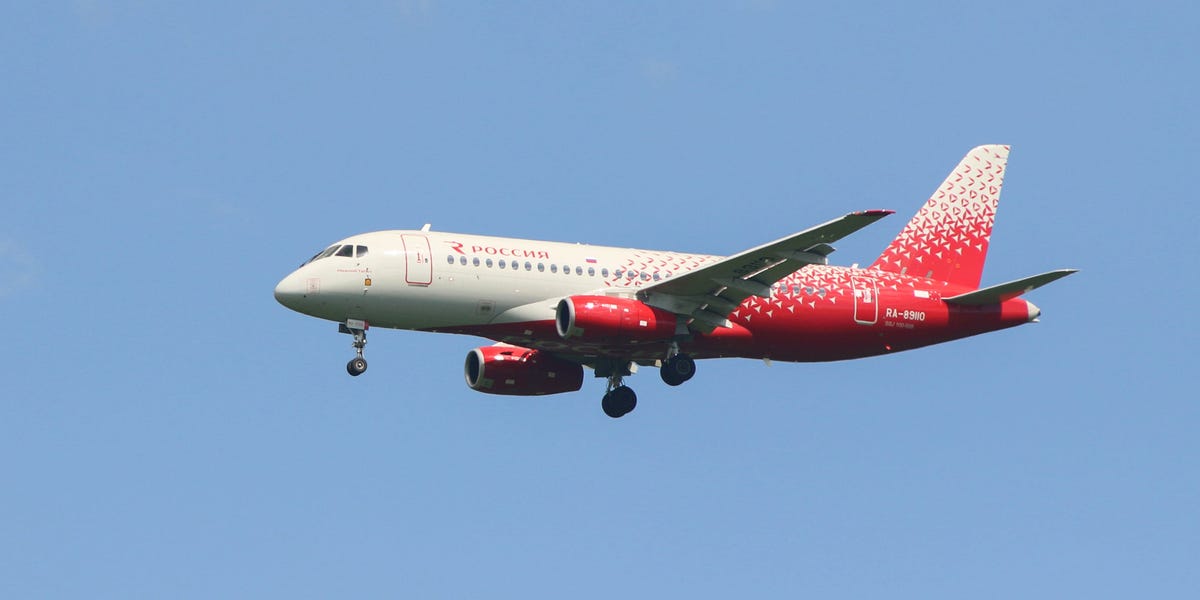Defying Sanctions: Russia Unveils Homegrown Superjet Rebuilt Entirely with Domestic Technology
Business
2025-03-18 05:27:38Content

Rostec, Russia's state-owned technology corporation, has achieved a significant milestone in its aviation development. The company successfully completed a test flight of its domestically modified regional jet, featuring a newly developed PD-8 engine. This breakthrough marks an important step in Russia's efforts to reduce reliance on foreign aerospace technology.
The new PD-8 engine replaces a previous power unit that was previously sourced from a French manufacturer, demonstrating Russia's growing capability to produce advanced aviation technology independently. By creating this indigenous engine, Rostec has showcased its technical prowess and commitment to developing self-sufficient aerospace capabilities.
The successful flight represents more than just a technical achievement; it symbolizes Russia's strategic push to localize critical manufacturing capabilities and reduce international technological dependencies. This development is particularly significant in the current geopolitical landscape, where technological self-sufficiency has become increasingly important for national industries.
Russian Aviation Breakthrough: Homegrown Engine Revolutionizes Regional Jet Technology
In the rapidly evolving landscape of aerospace engineering, Russia's technological prowess takes center stage as Rostec demonstrates a remarkable achievement in aviation innovation. The successful flight of a domestically engineered regional jet marks a significant milestone in the nation's quest for technological self-sufficiency, challenging international dependencies and showcasing indigenous engineering capabilities.Breaking Barriers: Russia's Bold Move in Aerospace Independence
The Engine of Transformation
The PD-8 engine represents more than just a mechanical replacement; it symbolizes Russia's strategic pivot towards technological autonomy. Developed as a direct response to international sanctions and supply chain disruptions, this homegrown powerplant embodies the nation's engineering resilience. By successfully substituting a previously foreign-sourced engine with a domestically manufactured alternative, Rostec has demonstrated an extraordinary capacity for rapid technological adaptation. The engineering marvel goes beyond mere replacement. Extensive research and development have culminated in an engine that not only matches but potentially surpasses its predecessor's performance specifications. Sophisticated materials engineering, advanced computational modeling, and rigorous testing protocols have converged to create a propulsion system that reflects Russia's deep technological capabilities.Geopolitical Implications of Technological Self-Reliance
The successful flight of the "Russified" regional jet carries profound geopolitical significance. In an era of increasing international tensions and economic uncertainties, the ability to develop critical aerospace technologies independently represents a strategic advantage. This achievement signals Russia's commitment to reducing vulnerability to external technological constraints and establishing a robust domestic manufacturing ecosystem. The PD-8's development is not merely a technical accomplishment but a statement of national technological sovereignty. By breaking free from reliance on foreign engineering expertise, Russia positions itself as a formidable player in the global aerospace landscape. The implications extend far beyond immediate aviation needs, potentially influencing future technological collaborations and economic strategies.Engineering Innovation and Future Prospects
Rostec's breakthrough illuminates the intricate relationship between technological innovation and national resilience. The PD-8 engine exemplifies how targeted investment in research and development can transform potential limitations into opportunities for groundbreaking achievement. Engineers and scientists have demonstrated remarkable ingenuity in creating a sophisticated propulsion system that meets stringent international standards. The regional jet's successful flight represents more than a singular technological milestone. It serves as a blueprint for future indigenous technological developments across multiple sectors. The methodologies, problem-solving approaches, and collaborative frameworks employed in this project could potentially be replicated in other critical technological domains, fostering a culture of innovation and self-sufficiency.Technical Complexity and Design Philosophy
Behind the PD-8's successful implementation lies a complex ecosystem of engineering excellence. Sophisticated computational fluid dynamics, advanced materials science, and precision manufacturing techniques converge to create an engine that represents the pinnacle of contemporary aerospace engineering. The design philosophy prioritizes performance, reliability, and adaptability, reflecting a holistic approach to technological development. The engine's development involved intricate challenges, including material selection, thermal management, and aerodynamic optimization. Each component underwent rigorous testing and refinement, ensuring that the final product not only meets but potentially exceeds international performance standards. This meticulous approach underscores Russia's commitment to technological excellence and continuous improvement.Economic and Strategic Ramifications
The successful integration of the PD-8 engine carries significant economic implications. By reducing dependence on foreign technologies, Russia can potentially lower procurement costs, enhance domestic manufacturing capabilities, and create new employment opportunities in high-tech sectors. The project demonstrates how strategic technological investments can yield substantial long-term economic benefits. Moreover, this achievement positions Russian aerospace manufacturers as competitive global players, potentially opening new markets and collaboration opportunities. The ability to develop sophisticated indigenous technologies serves as a powerful signal of technological maturity and engineering prowess.RELATED NEWS
Business

Vision and Growth: How Geiser Co. Plans to Elevate Business and Community Prosperity
2025-03-26 08:00:37







